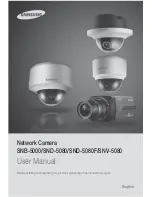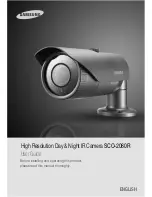
C7961E,F DYNAMIC SELF-CHECK ULTRAVIOLET FLAME DETECTOR
7
65-0267-09
IMPORTANT
The notch and arrow on the faceplate must be aligned
in a vertical plane with the notch up and the arrow
pointing down.
The housing must be mounted with the conduit opening
approximately 45° below horizontal (see Fig. 6).
To mount a C7961E (Fig. 8):
1.
The mounting flange is in two pieces. Loosen (but do not
remove) the three screws holding the flange together.
2.
Slightly rotate the detector so the slots in the back sec-
tion of the mounting flange clear the screws in the front
section; then separate the two sections.
3.
Screw the front section of the mounting flange onto the
sight pipe, reducer, or other fitting.
4.
Fit the slots in the back section of the mounting flange
(with the detector) over the three screws in the front sec-
tion, and rotate the detector so the screws hold the
flange together.
5.
Tighten the screws securely.
To mount the C7961F with explosion-proof housing (Fig. 9):
1.
Unscrew the collar on the pipe union and remove the
coupling section. The collar and coupling are in two
pieces; do not separate them.
2.
Screw the coupling onto the sight pipe, reducer, or other
fitting.
3.
Mount the remainder of the pipe union (with the detector)
onto the coupling and securely tighten the collar.
Fig. 8. Mounting C7961E Detector.
Fig. 9. Mounting a C7961F Detector.
WIRING (FIG. 10)
CAUTION
Equipment damage hazard.
Improper wiring can permanently damage amplifier.
Follow all wiring directions carefully to avoid equipment
damage.
NOTICE: Per industry standards, a conduit seal or a cable
type that is sealed is required to be installed in a device
that can result in flammable gas or flammable liquid flow
through a conduit or cable to an electrical ignition source
in the event of a seal leakage.
1.
All wiring must comply with applicable local electrical
codes, ordinances, and regulations. Use NEC Class 1
wiring.
2.
Keep the flame signal leadwires as short as possible
from the flame detector to the terminal strip or wiring
subbase. Capacitance increases with leadwire length,
reducing the signal strength. The maximum permissible
leadwire length depends on the type of leadwire and
conduit type and diameter.
The ultimate limiting factor in
flame signal leadwire length is the signal current.
Refer
to Table 1.
3.
The detector has color-coded plastic-insulated lead-
wires, 8 ft (2.4m) long, rated for 221°F (105°C).
These
wires must be run in a conduit.
4.
If the leadwires are not long enough to reach the termi-
nal strip or wiring subbase, make the required splices in
a junction box.
5.
If splicing is necessary, use moisture-resistant 14 AWG
wire suitable for at least 167°F (75°C).
6.
For high temperature installations,
use Honeywell speci-
fication No. R1298020 wire or equivalent for the F lead-
wire. This wire is rated up to 400°F (204°C) for
continuous duty. It is tested for operation up to 600 volts
and for breakdown up to 7500 volts. For the other lead-
wires, use moisture-resistant 14 AWG wire selected for a
temperature rating above the maximum operating tem-
perature.
7.
Refer to Fig. 10 for wiring connections.
IMPORTANT
Do not run the flame detector wiring in the same con-
duit with high voltage ignition transformer wires.
129034 (3/4" NPT)
124198 (1 IN. NPT)
FRONT SECTION OF
MOUNTING FLANGE
NOTCH IN FACE PLATE
BACK SECTION OF
MOUNTING FLANGE
FACEPLATE
CAPTIVE COVER SCREW (4)
SCREW ONTO
SIGHT
PIPE
SLOT (3)
FLANGE
SCREWS (3)
ROTATE DETECTOR
THIS WAY WHEN
MOUNTING
ROTATE DETECTOR
THIS WAY TO
SEPARATE MOUNTING
FLANGE
COVER
M34215A
SCREW COUPLING
ONTO SIGHT PIPE
PIPE
UNION
COLLAR
HOLE
KEYED
TO PIN
ON BODY
FLANGE
BODY FLANGE
HEX-HEAD
COVER BOLT (6)
COVER
M1955A






























